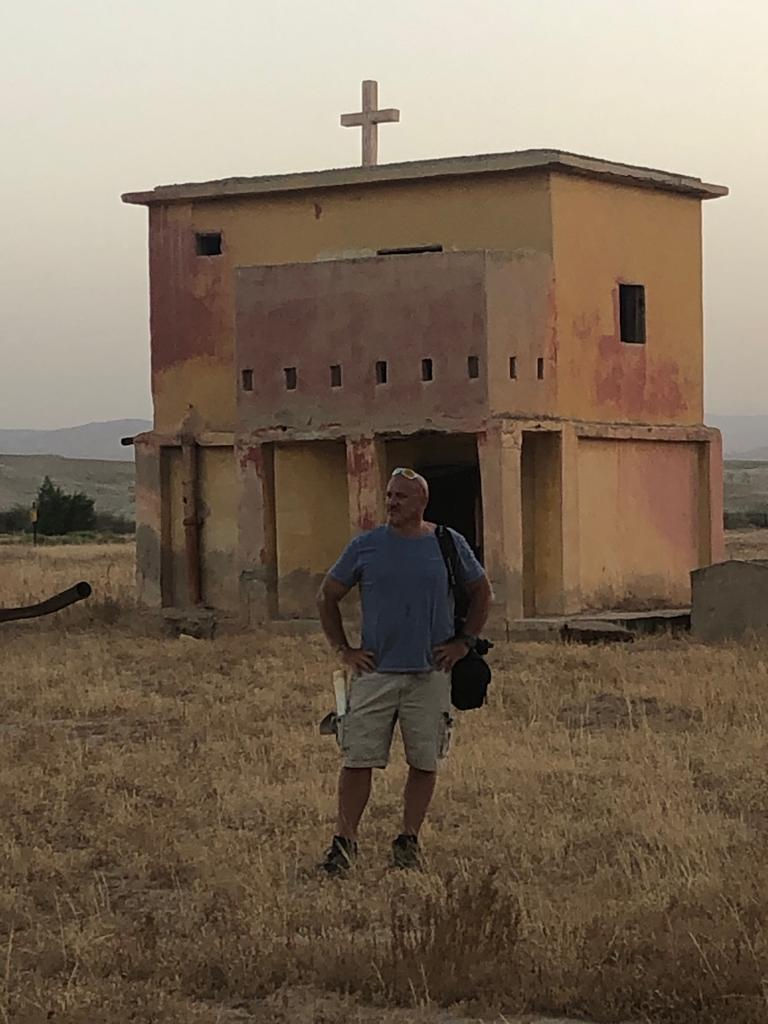For 53 years this area to the north of the Dead Sea has been closed for tourists. Issues range from proximity to the Jordanian boarder (with whom we only signed a peace treaty in 1994), to safety hazards but the main reason this piece of land was a military zone was the 3000 mines that were buried there. 7 19th century monasteries were built in this area and deserted during the 6 day war in 1967.
Well, the landmine project is over and I got to peak and film this amazing landscape that was deserted for ages. (about the landmines project: https://www.israelhayom.com/2019/06/10/idf-working-to-rid-jordan-valley-of-landmines/) Here are some pictures that hopefully capture the majestic feeling you get when you see them for the first time.
An overview of the southern part:

The Ethiopian church and compound is the largest of the 7 monasteries.

A small house near the Romanian church, maybe belonging to the priest.

The Romanian church probably wins the 'best design' contest. Facing east like all churches in Israel its small but very has a nice charm.

It also has a shell hole in its northern wall.


Now the light is right :-)

The Syrian monastery in ruins:

The newly built Orthodox church on the Jordanian side of the border.

The Ethiopian compound from the south.

Interesting cross on top of the Ethiopian church.

Haile Selassie was Emperor of Ethiopia from 1930 to 1974 AKA The conquering Lion of the Tribe of Judah.

Again the beautiful Romanian church.

It is encouraging to see the Epiphany ceremonies take place again in this area:


When the sun sets over the valley, a new type of majic comes to life.

We visit the Jordan valley in our 7 and 14 day tours. I hope that this land of monasteries will be open for tourists soon so we could see those places up and close.

Comments